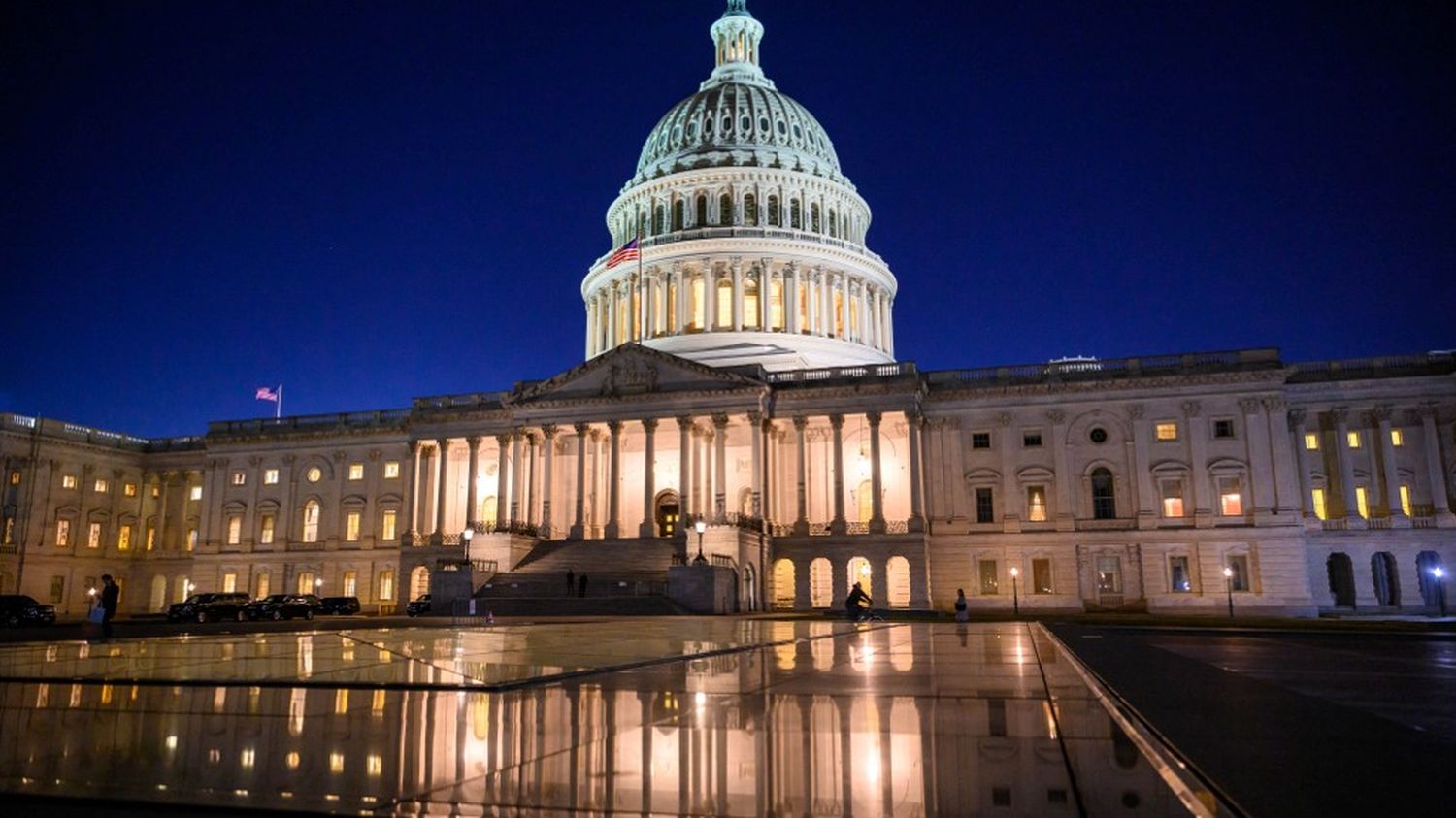The vote on the American administrations’ budget was postponed until mid-November, in order to avoid paralyzing the country.
Relief in the United States. On Saturday, September 30, the American Congress voted for an emergency measure allowing the federal administration to be funded for another 45 days, while an agreement on the budget is reached. Without this, the country would have suffered a “shutdown”, that is to say a paralysis of ministries and many public services, due to lack of funding.
This postponement, validated just three hours before the deadline, allowed “to avoid an unnecessary crisis, which would have inflicted unnecessary suffering on millions of Americans”, welcomed the American President, Joe Biden. What does this temporary agreement contain? And what consequences can the “shutdown” have on the lives of Americans? Franceinfo answers five questions about this national blockade, which has occurred ten times in the United States since the 1980s.
1Concretely, what is “shutdown”?
The “shutdown” is the total or partial closure of the American federal administration due to Congressional disagreement over the budget. In the United States, certain public services are financed by the states, but others depend on the central government. Each year, the Senate and the House of Representatives, which make up Congress, are called upon to vote to decide on the funds allocated to these federal services.
If they don’t agree before their deadline, the US government will run out of money and have no choice but to cut off many of these services. The American Constitution requires this cessation of activity until a consensus has been found.
The consequences are numerous and clearly visible: 1.5 million civil servants find themselves without pay, all the country’s national parks close their doors, air traffic slows down… In 2019, a beer manufacturer filed a complaint against the government , because the “shutdown” prevented the sale of its drinks, due to the lack of an open office to approve its product.
2How was the blockage avoided?
Seeing the September 30 deadline approaching, Republican Speaker of the House of Representatives Kevin McCarthy proposed a final compromise: an emergency state funding law for 45 days, providing funds to respond to natural disasters . However, it excludes aid promised by Democratic President Joe Biden to Ukraine and provisions relating to border controls, dear to the hard-line Republicans. Adopted with 335 yes (91 no) in the House, the text was then approved by 88 senators against 9.
This legislation therefore maintains current government spending while “Congress [remette] correctly at work”commented Kevin McCarthy on X (ex-Twitter). A way of giving priority to the Americans, who might not have welcomed the idea of undergoing a “shutdown” because of disagreements linked to the war in Ukraine. But the Republican speaker’s move, which thus angered the part of his camp opposed to any compromise with the Democrats, could cost him his position.
3Does this agreement put an end to American aid to Ukraine?
Temporarily, the United States no longer helps Ukraine. So far, Congress has approved around $113 billion (around 106.7 billion euros) in aid to kyiv, according to CNN. The emergency funding law passed on Saturday excludes a new aid package of some $24 billion (22.7 billion euros), which appeared in the budget on which Democrats and Republicans failed to agree. ‘grant to Congress. It is therefore blocked.
“We cannot under any circumstances allow the interruption of American aid”warned Joe Biden in a press release released by the White House in the evening. “I expect the Speaker of the House [Kevin McCarthy] respects its commitment to the Ukrainian people and ensures the adoption of the necessary support to help Ukraine at this critical moment”, added the American president. Especially since ten days earlier, Ukrainian President Volodymyr Zelensky came to plead his case at the Capitol.
But aid to Ukraine is increasingly dividing the American political class, particularly among the Republicans, who have a majority in Congress. “What Russia did is wrong. But I think whatever we do, we need to define what victory means and what the plan should be.”, Kevin McCarthy recently declared. A handful of Trumpist Republican elected officials refuse to release any new aid to kyiv, believing that these funds should be allocated to the management of what the Republicans describe as “migrant crisis” on the border with Mexico.
4What will happen after 45 days?
Discussions will resume on Monday at the Capitol, which houses the two chambers of Congress. Now that the emergency is assured, American parliamentarians have six weeks to agree on a long-term budget, against a backdrop of tensions in the Republican camp. These discussions promise to be just as difficult as during the first round. Particularly for Kevin McCarthy, who could find himself targeted by a motion against him from supporters of former President Donald Trump.
The two sticking points will return to the table: border security, supported by the Republicans, and aid to Ukraine, desired by the Democrats. If a consensus is not found before November 17, and no new emergency law is passed, the “shutdown” will be inevitable.
5 Are shutdowns common?
There have been no less than ten situations of blockage in the federal administration since the 1980s, when the first “shutdowns” appeared. Former President Ronald Reagan holds the record in this area, with eight “shutdowns” occurring during his two terms, recalls the Washington Post.
The duration of these blockages varies: 21 days at the end of 1995 during the administration of Bill Clinton, 16 days in 2013 when Barack Obama was president… With 35 days of immobilization, the longest period of ” shutdown” took place under Donald Trump in 2019. At the time, elected Democrats categorically refused to vote for funding the wall wanted by Trump on the Mexican border. According to a Congressional study, cited by Bloomberg, this blockage caused the American economy to lose $3 billion.
